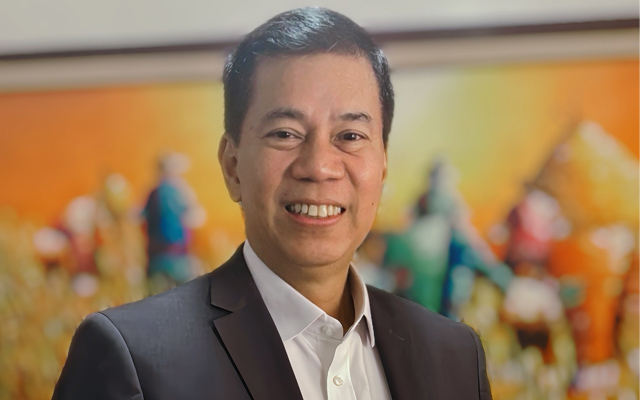Benito Bengzon Jr, the executive director of the Philippine Hotel Owners Association (PHOA), discusses the challenges and opportunities facing tourism, and the importance of an association in driving changes in the industry

Why was the recent Philippine Tourism and Hotel Investments Summit 2024 by PHOA timely and beneficial for the hospitality sector?
The Summit 2024 marked a significant milestone as it was the first-ever major event organised by PHOA which brought together key decision-makers from the government and private sectors to discuss investment opportunities in the tourism and accommodation industry. The results were encouraging.
By pioneering this summit, PHOA aims to convey a strong message that we are committed to playing a lead role in promoting hotel investments in the country and helping the hospitality sector.
What indicates PHOA’s confidence in the country’s tourism and hospitality industry’s recovery, given their significant commitment at this early stage?
We recognise the immediate need to increase the country’s room inventory, which is below many of our South-east Asian neighbours. This is why there is a deliberate effort among PHOA members to do their share in developing new hotels and expanding those currently operating.
Between 2024 and 2028, 55 new hotels will be constructed, adding 15,000 rooms in various categories to the country’s inventory. These hotels will not only be concentrated in traditional gateways such as Manila, Cebu and Clark, but will also be developed in emerging destinations such as Bohol, Palawan and Siargao.
In September, we published the 2024 Philippine Accommodation Pipeline Report, a comprehensive analysis examining the concentration of hotel projects, the emergence of new destinations for hotels, the breakdown of hotels by category (luxury, upscale, midscale, and budget), and future industry trends. The report provided valuable insights for investment and strategic planning.
What is the current state of domestic and foreign investment in the Philippine tourism and hospitality sector, including the preferred investment locations and property types?
It shows a mix of optimism and caution as the sector continues to recover from the impact of the pandemic. Domestic investments are seeing a steady increase as confidence builds in the industry’s recovery. On the other hand, foreign investments remain slightly subdued, with investors taking a wait-and-see approach before committing significant capital.
The tourism industry’s performance indicators are closely tied to the number of foreign visitors, which serves as a key metric for measuring recovery progress.
While the country registered 5.5 million foreign visitors in 2023, there is still a significant gap compared to the pre-pandemic high of 8.2 million in 2019. This disparity highlights the ongoing challenges in rebuilding the tourism sector to pre-crisis levels.
Looking ahead, a clear timeline for achieving full recovery to 2019 levels is crucial for stakeholders in the tourism value chain, including hotels and related enterprises.
Understanding when the industry is expected to bounce back to pre-pandemic levels will help businesses make informed decisions and strategise effectively to capture opportunities as the sector regains momentum.
What specific aspects of the investment framework for hotel investments in the Philippines does PHOA aim to align with those found in other Asian countries?
Investors will always look at options in different destinations in a geographical region and the Philippines must remain attractive in terms of market demand, strategic infrastructure and investment framework. PHOA highlighted the importance of incentives and the cooperation of relevant government agencies to help ensure the viability of hotel projects and raise the country’s competitiveness.
What additional factors need to be addressed to further enhance investor confidence in the Philippine tourism and hospitality sector?
Air connectivity, financial incentives, and ease of doing business must be prioritised.
Given that the Philippines is an archipelago, enhancing air connectivity between key points will significantly impact tourist traffic, making accessibility and pricing more competitive. Even more important is to have a clearer picture of the market demand forecast. Investors need to see definitive figures on overall informed and domestic tourist targets and destination preferences.
Additionally, streamlining the business processes required for forming, implementing, and closing a business in the Philippines is crucial. This has been a challenge for both local and foreign investors, particularly for hotel investors who face substantial capital investments in physical assets.
What other initiatives or projects is PHOA currently undertaking or planning to launch in the near future?
Over the past few years, PHOA has been actively involved in strengthening connections with government and industry stakeholders. This has resulted in the expansion of our membership base and an enhanced focus on advocacy work.
The National Accommodation Standards for Hotels, Resorts, and Apartment Hotels was released on April 8, 2024. The updated standards have long been advocated for by PHOA, and we are delighted that they have been revised under the stewardship of tourism secretary Christina Garcia Frasco. This demonstrates our commitment to ensuring high-quality standards within the industry.
The Philippine Hotel Industry Strategic Action Plan was also officially launched to the public in October.
How has your transition been from a 35-year public sector career, including your time as Undersecretary at the Department of Tourism (DoT), to the private sector?
It was relatively easy for me because many of the challenges and opportunities in tourism and hospitality are common to both PHOA and DoT. I just see them from different lenses.
The two organisations are at the forefront of dealing with tourism and hospitality in the country. This unique experience and privilege has given me a balanced perspective, and a more profound understanding of the challenges and opportunities tourism faces.
I am also quite familiar with many of the members of PHOA as I had numerous opportunities to work with them while I was with DoT. The collaboration covered marketing and promotions, training, capacity-building and investments. This time I am directly engaging with the hotel owners who are the decision-makers. I have come to appreciate the interconnectedness of various stakeholders and the importance of collaboration in advancing the sector.
PHOA is passionate about our advocacies and goals and these are precisely what DoT aimed to support through our strategic programmes.
How big is PHOA?
It comprises 225 member hotels, including 182 corporate members and 43 individual members. While more than half is located in the National Capital Region, our portfolio also includes hotels in prominent destinations such as Panglao and Tagaytay.
In 1Q2024, PHOA welcomed 18 new member hotels – the highest increase in the past four years since I joined in 2021. The membership growth, showcases the association’s expanding influence and relevance within the hospitality industry in the Philippines.
The diversity in the profile of the members, ranging from individual to corporate and spread across different regions, reflects PHOA’s encompassing approach in representing the interests of a wide range of stakeholders.
The investment profile of PHOA members is a key indicator of the association’s potential and impact on the sector. By bringing together hotels with different investment strategies and profiles, PHOA fosters a collaborative environment where members can share best practices, insights, and opportunities for growth and development.
In addition to the projects our current members have in the pipeline, we are preparing for 2025 by expanding our membership base among smaller industry players. Setting targets for future growth and expansion in Visayas and Mindanao, demonstrates PHOA’s commitment to representing the industry comprehensively and ensuring that the association is both diverse and inclusive.
The importance of an association like PHOA cannot be understated. By providing a platform for industry players to come together, share knowledge, advocate for common interests, and collaborate on initiatives, associations play a crucial role in driving innovation, growth, and sustainability within a sector. PHOA’s efforts in expanding its membership base and targeting specific regions reflect a proactive approach to ensuring that the voice of the Philippine hotel industry is heard and that members have the support they need to thrive in a dynamic and competitive market.













